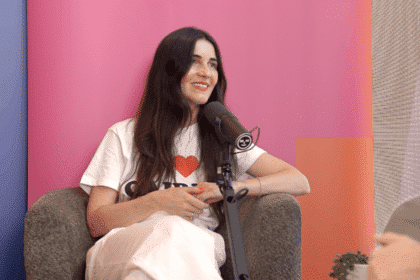According to a new media trust study by Ipsos, Australians have less trust in the media, but more trust in traditional media than many around the globe.
In Australia over the past five years, trust in newspapers and magazines has had a net decline of 14 per cent. That is, 28 per cent have less trust now versus 14 per cent who trust them more.
Trust in TV and radio had a net decline in trust of 13 per cent , while trust in online news websites and platforms had a net decline in trust of nine per cent.
Globally, newspapers and magazines suffered the greatest net decline in trust of 16 per cent alongside TV and radio (16 per cent ), followed by online news websites and platforms at 12 per cent versus five years ago.
The study finds that people across 27 countries are divided on whether they trust traditional media (newspapers, magazines, TV, and radio).
Globally, 49 per cent trust TV and radio to be a reliable source of news and information, while 46 per cent do not have much trust, or no trust at all. The picture is similar for newspapers and magazines – 47 per cent trust them and 48 per cent do not.
Trust in traditional media in Australia is much greater than the global average. More than half of Australians (57 per cent ) trust television and radio, with the majority (46 per cent) saying they have a ‘fair amount of trust’ while 11 per cent say they have ‘a great deal of trust’ in TV and radio.
Four in 10 (38 per cent) don’t trust television and radio. For newspapers and magazines, the figures are similar with just over half (54 per cent) trusting those mediums. The same number (46 per cent) have a ‘fair amount of trust’ while 8 per cent have ‘a great deal of trust’. Again, four in 10 (41 per cent ) don’t trust newspapers and magazines.
Online websites and platforms are only slightly less trusted than traditional media (45 per cent trust them, 50 per cent distrust) at a global level. In Australia, 54 per cent have a great deal or fair amount of trust in online websites and platforms while 40 per cent don’t trust them.
At the same time, people believe that fake news is prevalent in the information they receive via different sources. At a global level, more than half (52 per cent ) believe there is a ‘great deal’ or ‘a fair amount’ of fake news in newspapers and magazines, as well as on TV and radio.
People are particularly skeptical of the information received by online news websites and platforms, with 62 per cent globally saying that the information they provide contains a great deal or fair amount of fake news.
In Australia a slightly larger number (57 per cent ) believe there is a ‘fair to great extent of fake news’ in newspapers and magazines. For TV and radio, 54 per cent say there is a prevalence of fake news. A greater number of Australians have less trust in online news sites and platforms, with 63 per cent saying there is a ‘fair to great amount’ of fake news.
Another dimension of media trust is whether respondents think different sources act with good intentions when providing news and information. Overall, the percentage of people who believe that the media acts with good intentions is similar to current levels of trust.
Exactly half of global respondents believe newspapers and magazines act with good intentions, and 52 per cent agree when it comes to TV and radio, while slightly less, at 49 per cent, agree for online news websites and platforms.
In Australia, the numbers are higher with just over half (55 per cent) believing newspapers and magazines act with good intentions, 60 per cent for TV and radio and 57 per cent for online news websites and platforms.
Ipsos Australia director David Elliott said: “While Australians’ trust in traditional and digital media has declined over the past five years, we are, however, still one of the more trusting nations of our media channels. The decline in trust looks to be driven by the prevalence of fake news and doubts about media outlets’ intentions.
“Interestingly there is not much gap between the trust that Australians have in traditional media and the trust they have in online news websites and platforms, although there was a greater perceived prevalence of fake news on the latter.
“Where the gap does exist is the trust we have for those we know predominantly through the internet versus those we know in person, with the latter being by far the most trusted as a reliable source of news and information.
“Encouragingly for our public broadcasters Australians are one of the nations who are more positively disposed toward our public broadcasters. We are one of only 10 nations to have more people trusting than distrusting their public broadcasters and are also more likely than most to believe they provide a necessary service; they offer quality programming; and to disagree they are obsolete.
“We are also one of the least likely to see them as overly elitist and bureaucratic. So clearly, Australians value and continue to see a role for public broadcasters such as the ABC and SBS.“








